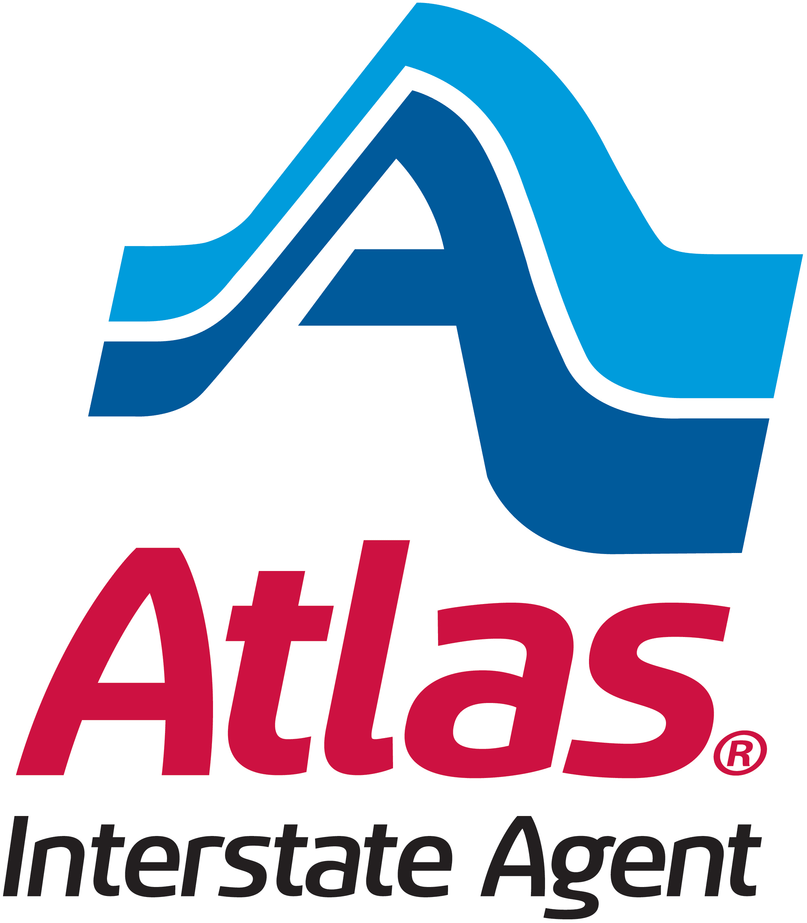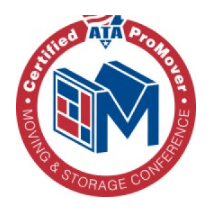Moving Out of State in 6 Months? Expert Tips for Success

Moving across state lines marks the beginning of an exciting new chapter – and with six months to prepare, you’ve got the perfect window to make it happen smoothly. This major life transition involves dozens of moving parts, from finding the ideal neighborhood to coordinating logistics and managing paperwork.
But here’s the good news: breaking it down into strategic phases transforms this complex journey into a series of achievable steps.
Drawing from over 100 years of moving expertise, we’ve discovered that successful interstate moves require more than just packing boxes and hiring a truck. They demand a detailed strategy that covers everything from precise budget planning to researching your new community.
A carefully structured timeline ensures you’ll tackle essential tasks like securing housing, transferring utilities, and updating legal documents at exactly the right moment.
Think of your interstate move as a carefully choreographed sequence rather than a single overwhelming event. Our proven six-month framework guides you through critical milestones: creating a realistic moving budget, researching housing markets, coordinating logistics, and managing the countless details that ensure a smooth transition.
By approaching your move with this strategic mindset, you’ll sidestep common pitfalls while keeping stress levels manageable throughout the entire process.
Creating Your Six-Month Moving Timeline
Understanding the duration of a move doesn’t have to feel overwhelming. After helping thousands of families successfully relocate across state lines, we’ve fine-tuned this practical timeline to make your move smoother and more manageable.
Month-by-Month Action Plan
Start preparing for a move by following these detailed steps for each month leading up to your relocation.
Months Before Moving Day
Take a scouting trip to your potential new state – there’s nothing like boots-on-the-ground research to find the right neighborhood fit. Set up a dedicated moving fund and map out your budget, including often-overlooked expenses like temporary storage or pet transportation. If you’re job hunting, now’s the perfect time to start networking in your new location.
Months Before Moving Day
Lock down your housing situation – whether buying or renting, you’ll want this squared away early. Start a moving command center (we recommend a sturdy binder) to keep every document, quote, and checklist in one place.
Reach out to at least three reputable moving companies for detailed estimates. Pro tip: Friday moves typically cost more than mid-week relocations.
Months Before Moving Day
Time to tackle that decluttering project you’ve been putting off. Create a detailed inventory as you go – photos work great for insurance purposes. Book your chosen moving company and start collecting those essential packing supplies. A quick tip: snap pictures of how your electronics are connected to save hours of frustration during setup.
Months Before Moving Day
Start packing items you won’t need until after the move – holiday decorations, off-season clothes, and rarely-used kitchen gadgets. If you’re changing jobs, nail down those final employment details. Research and create a shortlist of schools, doctors, and essential services in your new area.
Months Before Moving Day
Schedule those final medical appointments and arrange for records transfer. Keep packing steadily, room by room. Create an “essential documents” box for birth certificates, passports, and insurance papers – this one travels with you, not the moving truck.
Month Before Moving Day
Lock in your travel plans and double-check all moving company details. Contact utility providers at both locations to schedule service transfers. Start using up frozen foods and pantry items – moving companies typically won’t transport perishables across state lines.
Essential Tasks and Deadlines
Stay on track with these critical moving tasks:
- File your change-of-address form (available online through USPS)
- Update or transfer banking relationships
- Review and adjust insurance coverage for your new location
- Make arrangements for pet transportation
- Book professional cleaners for both properties
- Map out your travel route or secure flight reservations
Digital Tools and Apps for Move Planning
Make technology work for you during your move:
- Sortly or Similar: Track your inventory with photos and tags
- Google Calendar: Set automatic reminders for key deadlines
- Dropbox or Google Drive: Store and access moving documents anywhere
- Mint or YNAB: Keep your moving budget in check
- FaceTime or Zoom: Take virtual home tours and connect with realtors
While this timeline serves as your roadmap, feel free to adjust it based on your unique situation. The key is maintaining steady progress while building in enough flexibility to handle unexpected challenges. Remember: a well-planned move is typically a successful move.
Financial Planning and Budgeting
Moving to a new state is a significant investment – one that benefits tremendously from smart financial planning. Let’s explore the real costs and practical strategies that’ll help you chart this transition with confidence.
Moving Cost Breakdown
Interstate moves come with distinct expense categories that need careful consideration. Before getting started, you can calculate your moving costs to better prepare your budget. Here’s what you’re typically looking at:
Professional moving services vary based on three key factors: distance, home size, and timing. Real-world example: moving a two-bedroom home across state lines typically costs between $3,500 and $7,000. This includes:
- Professional packing services
- Loading and unloading
- Interstate transportation
- Basic furniture assembly
Transportation costs extend beyond the moving truck itself. Plan for:
- Personal vehicle transport or travel expenses
- Fuel costs for long-distance driving
- Hotel stays during multi-day moves
- Meals and rest stops
- Potential airline tickets and baggage fees
- Car rental needs at your destination
Packing materials represents a substantial investment in protecting your belongings. Professional-grade materials – from sturdy boxes to specialized padding – ensure better protection during long-distance transport. While these might seem like minor expenses, they typically add up to $300-500 for a two-bedroom home.
Hidden Expenses to Consider
Even seasoned movers can be caught off guard by unexpected costs. Understanding service-related expenses, such as tipping movers, is essential for accurate budgeting. Storage fees often arise when closing dates don’t align perfectly, while insurance adjustments in your new state might impact your monthly budget.
Common administrative costs include:
- Vehicle registration ($25-300 depending on state)
- New driver’s license fees ($20-100)
- Utility deposits ($100-300 per service)
- Professional cleaning services ($200-400)
- Pet registration and health certificates ($50-200)
- School records transfer fees ($25-50)
Money-Saving Strategies
Smart planning can significantly reduce your moving expenses. Start saving money to move out at least three months before your planned relocation date. Consider a hybrid approach: pack everyday items yourself while leaving specialty items (artwork, antiques, electronics) to the professionals.
Here’s an insider tip: timing dramatically affects moving costs. Peak season (May through September) commands premium rates, but planning your move during October through April could save up to 30% on professional moving services.
Keep detailed records of all moving expenses – especially if your move is job-related. Recent tax law changes have limited moving expense deductions to military members, but maintaining thorough documentation ensures you won’t miss any available benefits.
Setting Up an Emergency Moving Fund
A dedicated emergency fund provides essential peace of mind during your move. Industry experience shows that setting aside an additional 20% of your estimated moving costs creates a reliable buffer for unexpected expenses. For a $5,000 move, that means having $1,000 in reserve.
Practical steps to build your emergency fund:
- Set up automatic weekly transfers to a dedicated savings account
- Start saving at least 6 months before your planned move date
- Keep funds easily accessible in a standard savings account
- Maintain a separate “immediate needs” fund of $500-1,000 for those first-week essentials
Remember that the first month in your new home often brings numerous small purchases – from basic cleaning supplies to drawer organizers. Having readily available funds helps smooth this transition period when you’re likely to face both regular bills and moving-related expenses.
Housing and Location Research
Finding the right place to call home in your new state is one of the most important decisions you’ll make during your home move. Let’s break down the key aspects of housing research to help you make a confident, well-informed choice.
New State Housing Market Analysis
When planning an interstate moving journey, the housing terrain can vary dramatically from one state to another. A $300,000 budget might buy a spacious home in Texas but only a modest condo in California. Start by diving into current market data:
- Average home prices and rental rates in specific neighborhoods
- Year-over-year price trends and appreciation rates
- Local economic indicators affecting housing prices
- Seasonal market patterns that could impact your timing
A skilled local real estate agent brings invaluable insights that national statistics miss. They’ll know which neighborhoods are up-and-coming, where prices are negotiable, and which areas offer the best value for your budget.
Neighborhood Selection Criteria
The right neighborhood shapes your daily experience and can make or break your satisfaction with the move. Focus on these critical factors:
- Average commute times during peak hours
- School ratings and specialized programs (if applicable)
- Distance to essential amenities (grocery stores, medical facilities)
- Crime statistics from local police departments
- Upcoming development projects and their potential impact
Pro tip: Join local Facebook groups or community forums where residents share real experiences. These firsthand accounts often reveal details you won’t find in official reports, like noise levels from nearby venues or the friendliness of neighbors.
Rental vs. Buying Considerations
Making the rent-or-buy decision requires careful analysis of both market conditions and personal circumstances. Renting offers valuable benefits for newcomers:
- Flexibility to explore different areas
- Lower upfront costs (typically 1-3 months’ rent as a deposit)
- Time to understand local market conditions
- Easier exit if job or lifestyle needs to change
For potential buyers, consider these market-specific factors:
- Property tax rates (ranging from 0.28% in Hawaii to 2.49% in New Jersey)
- Home insurance costs in weather-prone areas
- Local homeowners association (HOA) fees
- Historical appreciation rates in specific neighborhoods
Virtual House Hunting Tips
Modern technology makes remote house hunting more effective than ever. Here’s how to maximize virtual tools:
- Request 360-degree video tours showing natural light at different times
- Schedule live video walkthroughs to ask real-time questions
- Use mapping tools to check proximity to highways, airports, or train tracks
- Review local zoning maps for future development insights
Smart virtual house hunters keep these practical strategies in mind:
- Measure your current furniture and compare it to listing dimensions
- Ask for close-up videos of maintenance areas (furnace, roof, plumbing)
- Research permit history for any renovations
- Check cell phone coverage maps for the area
While virtual tools are excellent for narrowing choices, plan at least one in-person visit before making a final decision. Visit the neighborhood during morning rush hour, weekend afternoons, and evening hours to get a complete picture of daily life in your potential new home.
Remember that competitive markets move quickly. Having pre-approval letters, proof of funds, and required documentation ready can give you an edge when the perfect property becomes available.
Professional and Personal Preparations
Moving across state lines brings exciting opportunities – and a checklist of important tasks to handle before the moving truck arrives. Let’s break down the essential preparations that’ll set you up for success in your new home state.
Career Planning and Job Search
Starting your career preparations 4-5 months before moving day can make all the difference in your transition. Remote workers should have detailed discussions with HR about state-specific requirements – especially tax consequences that could impact your take-home pay.
Looking for a new position? Here’s what experienced relocators prioritize:
- Research typical salaries in your new city (they can vary by 15-30% between regions)
- Update your resume to highlight relocation plans and target date
- Connect with local professional associations in your field
- Take advantage of virtual interviewing platforms to start conversations early
School Transfer Process
For your children’s education, timing and documentation are critical. Start the transfer process three months before moving day to ensure a smooth academic transition.
Key steps for school transfers:
- Request complete academic records from the current school
- Contact new district for specific enrollment requirements
- Verify state-specific vaccination requirements
- Schedule placement testing if needed
- Arrange special education program transfers
Pro tip: Set up virtual meetings with teachers or counselors at the new school. These conversations help identify any curriculum gaps and ease first-day jitters.
Healthcare Provider Transitions
A well-planned healthcare transition keeps your family’s medical care running smoothly. Start by gathering complete medical records and creating a timeline for establishing care in your new location.
Essential healthcare transition steps:
- Get copies of all medical records
- List current medications and treatment plans
- Find in-network providers in your new area
- Schedule final visits with current doctors
- Arrange prescription transfers
- Map out nearby urgent care facilities
Remember: Insurance coverage can vary significantly by state. Review your policy details and consider any network changes that might affect your care options.
Banking and Financial Institution Changes
Smart financial planning prevents headaches during your interstate move. While digital banking makes many tasks easier, some financial matters still need personal attention.
Banking transition checklist:
- Check your bank’s presence in your new state
- Research local banking options and benefits
- Plan for a one-month overlap of old and new accounts
- Update automatic payments and direct deposits
- Review state-specific banking regulations
- Connect with local mortgage lenders if house-hunting
Money-saving tip: Keep detailed records of all moving-related expenses – some may be tax-deductible, depending on your situation and state requirements.
Remember to update the contact information for:
- Investment accounts
- Retirement plans
- Insurance policies
- Credit card companies
- Loan servicers
- Financial advisors
Digital banking portals make most of these updates straightforward but tackle them early to ensure smooth financial operations in your new location.
Moving Logistics and Organization
A successful interstate move hinges on thorough planning and precise execution. Let’s delve into the key elements that will keep your relocation on track and stress-free.
Choosing Moving Services
The foundation of a smooth move starts 4-5 months before your target date with selecting the right moving partner. Understanding the available types of moving services is crucial for your relocation success.
At Nelson Westerberg, we’ve handled thousands of unique moves, each requiring its own customized strategy. When choosing a moving company, here’s what matters most:
- Full-service options: From complete packing services to specialty item handling
- Verified credentials: DOT licensing and detailed insurance coverage
- Track record: Authentic customer feedback and industry standing
- Clear pricing: Detailed estimates with no hidden fees
Getting an accurate estimate is easier than ever with our video survey system – no in-person visits are required. Here’s a pro tip: Book your preferred moving date early, especially if you’re planning a summer move. The most reliable companies often fill their schedules 3-4 months in advance.
Packing Strategy and Timeline
Transform packing from overwhelming to achievable with a strategic three-month countdown plan. Following expert packing tips for moving can make the process much smoother. Here’s how to tackle it:
- Month 3: Pack seasonal items and rarely-used belongings
- Month 2: Create detailed box inventories and clear labeling systems
- Month 1: Pack room by room, leaving essentials for last
- Week of Move: Prepare your “first-week” box with immediate necessities
Smart Tip: Consider the climate difference between your current and future home. If you’re moving from Michigan to Florida in the summer, those winter coats can be among the first items packed.
Important Document Management
A well-organized document system prevents headaches during and after your move. Create a dedicated moving command center with these essential papers:
Essential Documents Checklist:
- Identity documents (passports, birth certificates)
- Financial records (tax returns, bank statements)
- Medical histories and prescription information
- Insurance policies and contact information
- Vehicle documentation (registration, maintenance records)
Pro Move: Scan these documents and store them in a secure cloud service. Keep physical copies in a waterproof container that travels with you, not in the moving truck.
Vehicle Transportation Options
Moving vehicles across state lines requires careful planning and timing. Drawing from decades of experience, we’ve streamlined the process to protect your valuable vehicles.
For DIY Vehicle Transport:
- Schedule maintenance checks 30 days before departure
- Map your route with designated rest stops
- Research parking regulations at your destination
- Pack an emergency road kit
Professional Vehicle Shipping Services:
- Book 6-8 weeks ahead for best rates and availability
- Document vehicle condition with photos and inspection reports
- Choose between convenient door-to-door or cost-effective terminal service
- Coordinate pickup timing with household goods delivery
The key to a seamless interstate move lies in synchronizing these moving pieces. By partnering with an experienced moving company, you’ll have an expert team coordinating every detail – from packing your first box to delivering your vehicle. This detailed strategy not only reduces stress but ensures every aspect of your move flows smoothly into the next.
Legal and Administrative Tasks
Moving across state lines involves more than just packing boxes – it’s about setting up your new life properly from day one. Here’s your roadmap to handling the essential legal and administrative tasks that will make your interstate move smoother and fully compliant.
State-Specific Requirements
Each state welcomes new residents differently, with its own unique set of rules and regulations. Starting your research about three months before moving day gives you a crucial head start. Most states expect new residents to register within 30 to 90 days of arrival – missing these deadlines can lead to unnecessary headaches.
Key areas to research include:
- State tax structures and filing requirements
- Professional license transfer procedures
- Vehicle inspection regulations
- Property tax considerations
- School registration deadlines
Address Change Checklist
Start your address updates about six weeks before moving day. Updating your address after moving requires attention to detail, and while the post office change-of-address form is important, it’s just the beginning. Here’s a detailed strategy to ensure you don’t miss critical communications:
Essential Updates:
-
- USPS official change of address (available online for a small fee)
- Banks and credit card companies
- Investment accounts and retirement plans
- Health, life, auto, and home insurance providers
- Government agencies (IRS, Social Security)
- Subscription services and online retailers
Smart Move Tip: Enable mail forwarding for 6-12 months to catch any overlooked correspondences. This extra step has saved countless movers from missing important documents.
Voter Registration Updates
Protecting your right to vote means acting quickly in your new state. Most state laws require voter registration at least 30 days before any election. The most efficient approach? Handle your voter registration while getting your new driver’s license through the “Motor Voter” program.
Essential Voting Tasks:
- Cancel old state voter registration
- Check new state registration deadlines
- Identify your new polling location
- Review local voting requirements
- Update party affiliations if needed
Driver’s License and Vehicle Registration
The clock starts ticking on your driver’s license and vehicle registration the moment you arrive. Most states give new residents just 30 days to complete these updates. Planning a DMV visit within your first two weeks helps avoid last-minute stress.
Required Documents Checklist:
-
- Valid current driver’s license
- Passport or birth certificate
- Social Security card
- New address proof (lease/utility bill)
- Vehicle title and registration
- Current insurance documentation
- Emissions test results (if required)
Remember: Vehicle requirements vary significantly by state. Some require detailed inspections, while others focus on emissions testing. Getting these checks done before your DMV visit can save you an extra trip.
Creating a digital timeline with specific deadlines for each task turns this complex process into manageable steps. Set calendar reminders for key dates, and tackle one item at a time. While the paperwork might seem overwhelming, staying organized and starting early ensures a smooth transition to your new state.
Frequently Asked Questions
- How much money should I save before moving out of state?
Planning an interstate move requires smart financial preparation. Here’s a practical breakdown: aim to save between $4,000 to $10,000 to cover your bases. This range isn’t just about the move itself – it includes the first month’s rent, security deposit, utility deposits, and that crucial emergency fund.
Think of it as building your relocation safety net. A solid approach is having three months of living expenses tucked away, plus your anticipated moving costs. Remember to factor in often-overlooked expenses like temporary housing or rental car needs.
- Should I hire movers or rent a truck for an interstate move?
Let’s talk real value here. While that DIY truck rental might look cheaper on paper, professional movers bring game-changing benefits to interstate moves.
They’re equipped with proper insurance coverage, specialized equipment for those challenging heavy items, and a comprehensive understanding of interstate moving regulations.
Picture this: instead of wrestling with furniture and driving a massive truck across state lines, you’re free to handle other critical aspects of your move. For full household moves especially, professional movers aren’t just a convenience – they’re an investment in peace of mind.
- What documents do I need when moving to another state?
Creating your “moving command center” starts with gathering these essential documents: driver’s license, vehicle registration, birth certificate, social security card, and medical records. Add your school transcripts, insurance policies, recent bank statements, tax returns, and current pay stubs to the mix.
Pro tip: set up a dedicated moving binder for these crucial papers. Keep it separate from your main moving items, and take it a step further by storing digital copies in a secure cloud service. This two-pronged approach ensures you’re covered, no matter what.
- How do I transfer my utilities to my new residence?
Mark your calendar for two weeks before moving day – that’s your sweet spot for utility planning. Start by contacting your current providers to schedule service disconnection. Then, explore investigating utility companies at your destination and secure those connection dates.
Here’s the key timing: most providers need 48-72 hours’ notice for both ends of the process. Make a checklist covering all bases: electricity, gas, water, internet, and waste management. Getting this right means walking into a fully functional new home.
- When should I start packing for an out-of-state move?
The three-month countdown to moving day is your signal to start packing. Begin with those holiday decorations, storage room items, and other belongings you won’t miss.
Breaking down the process room by room keeps things manageable and stress-free. Save your everyday essentials for that final week – think coffee maker, basic clothing, and crucial electronics.
Smart packing means setting aside a clearly marked “First Week” box with immediate necessities: basic tools, toiletries, charging cables, and a few kitchen essentials. This strategic approach transforms an overwhelming task into a well-organized project.
Conclusion
Moving to a new state within six months is absolutely doable – it’s all about breaking down this big life change into bite-sized monthly tasks. Think of it as your personal roadmap, guiding you from that first “We’re moving!” moment all the way to settling into your new home. Here’s what makes interstate moves truly successful:
- Strategic Planning: Start with a solid budget and thorough location research
- Timeline Management: Tackle specific tasks each month to avoid last-minute rushes
- Professional Support: Partner with experienced movers for the heavy lifting
- Documentation: Keep everything organized in a dedicated moving binder
The key to a smooth interstate move lies in the details. Your six-month window provides plenty of time to:
- Research and secure your new home
- Update important legal documents
- Sort and organize belongings
- Coordinate with moving professionals
- Set up utilities and services
Life has a way of throwing curveballs, even during well-planned moves. That’s perfectly normal – in fact, after helping thousands of families relocate across state lines since 1904, we’ve learned that flexibility is just as important as preparation. Keep your moving checklist handy, but don’t stress if things don’t go exactly according to plan.
Ready to transform this major life change into an exciting new chapter? Whether you’re relocating for career growth, family reasons, or simply seeking a fresh start, taking that first concrete step makes all the difference. Start your moving journey today – your new state adventure awaits.
Related Articles
Where to Move from Texas: Top 10 States for Ex-Texans in 2025

Where to Move from Texas: Top 10 States for Ex-Texans in 2025 Record numbers of Texans are exploring life beyond state lines, driven by soaring housing costs, evolving career landscapes, and the search for new lifestyle opportunities. The decision to leave Texas stirs intense emotions – after all, the Lone Star State‘s unique culture and […]
Read MoreHow to Move a House from One Location to Another: Planning to Completion

Relocating an entire house might seem like something out of a movie, but this remarkable feat of engineering happens more often than you’d think. From preserving historic mansions to saving beloved family homes from coastal erosion, house moving represents the intersection of cutting-edge engineering and practical problem-solving. With project costs typically ranging from $18,000 to […]
Read More




